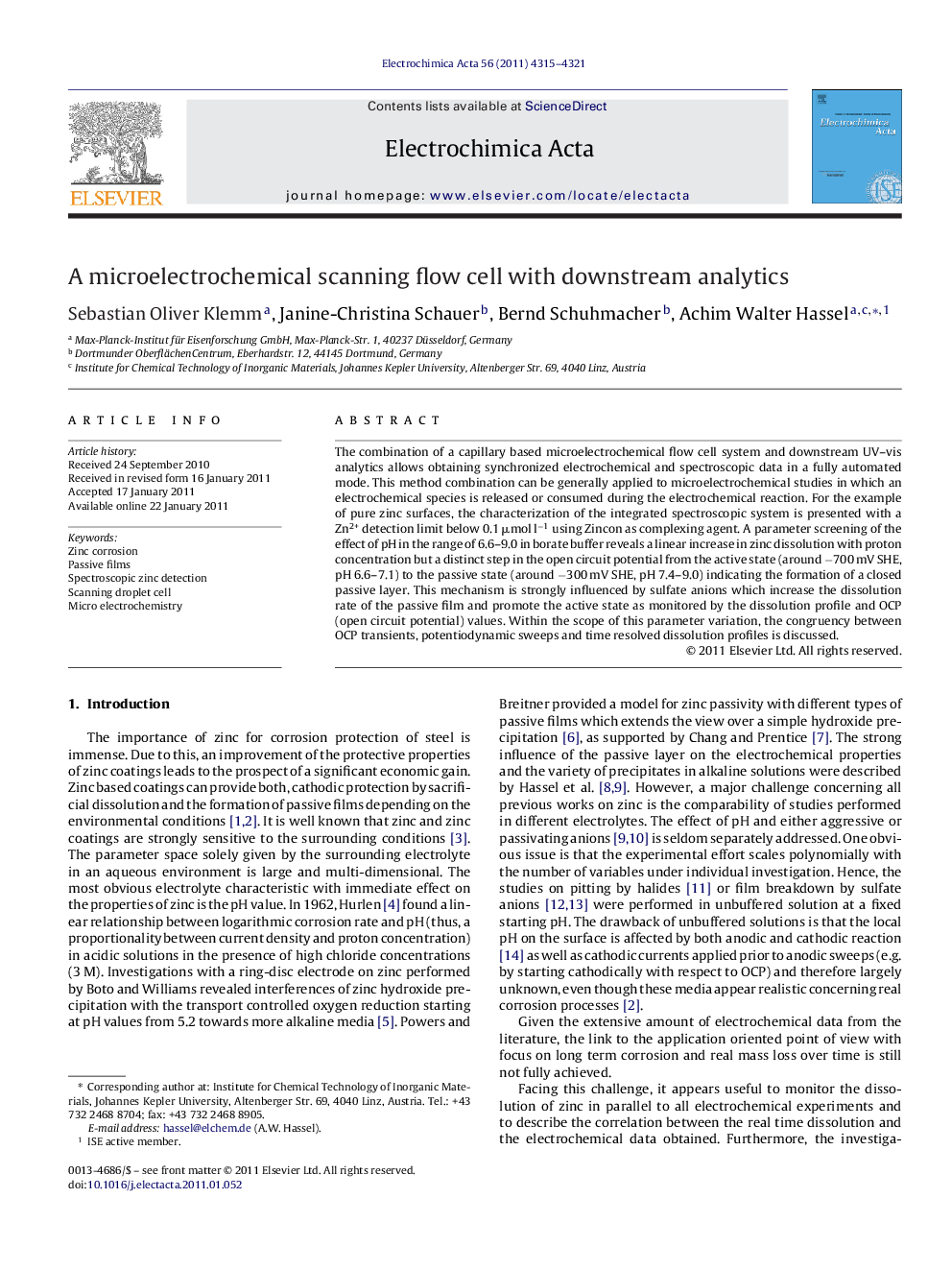| Article ID | Journal | Published Year | Pages | File Type |
|---|---|---|---|---|
| 190302 | Electrochimica Acta | 2011 | 7 Pages |
The combination of a capillary based microelectrochemical flow cell system and downstream UV–vis analytics allows obtaining synchronized electrochemical and spectroscopic data in a fully automated mode. This method combination can be generally applied to microelectrochemical studies in which an electrochemical species is released or consumed during the electrochemical reaction. For the example of pure zinc surfaces, the characterization of the integrated spectroscopic system is presented with a Zn2+ detection limit below 0.1 μmol l−1 using Zincon as complexing agent. A parameter screening of the effect of pH in the range of 6.6–9.0 in borate buffer reveals a linear increase in zinc dissolution with proton concentration but a distinct step in the open circuit potential from the active state (around −700 mV SHE, pH 6.6–7.1) to the passive state (around −300 mV SHE, pH 7.4–9.0) indicating the formation of a closed passive layer. This mechanism is strongly influenced by sulfate anions which increase the dissolution rate of the passive film and promote the active state as monitored by the dissolution profile and OCP (open circuit potential) values. Within the scope of this parameter variation, the congruency between OCP transients, potentiodynamic sweeps and time resolved dissolution profiles is discussed.
Research highlights► A flow type scanning droplet cell with in situ detection via UV–vis to investigate corrosion was constructed. ► Dependency of OCP of Zn on pH between 6.6 and 9.0 was studied with passive active transition between pH 7.1 and 7.4. ► Zinc concentration profiles revealed a steady etching process that is diffusion controlled at all pH values ► Sulfate ions interfere with the passivity of zinc and increase the etching rate, they also influence the pitting potential.
